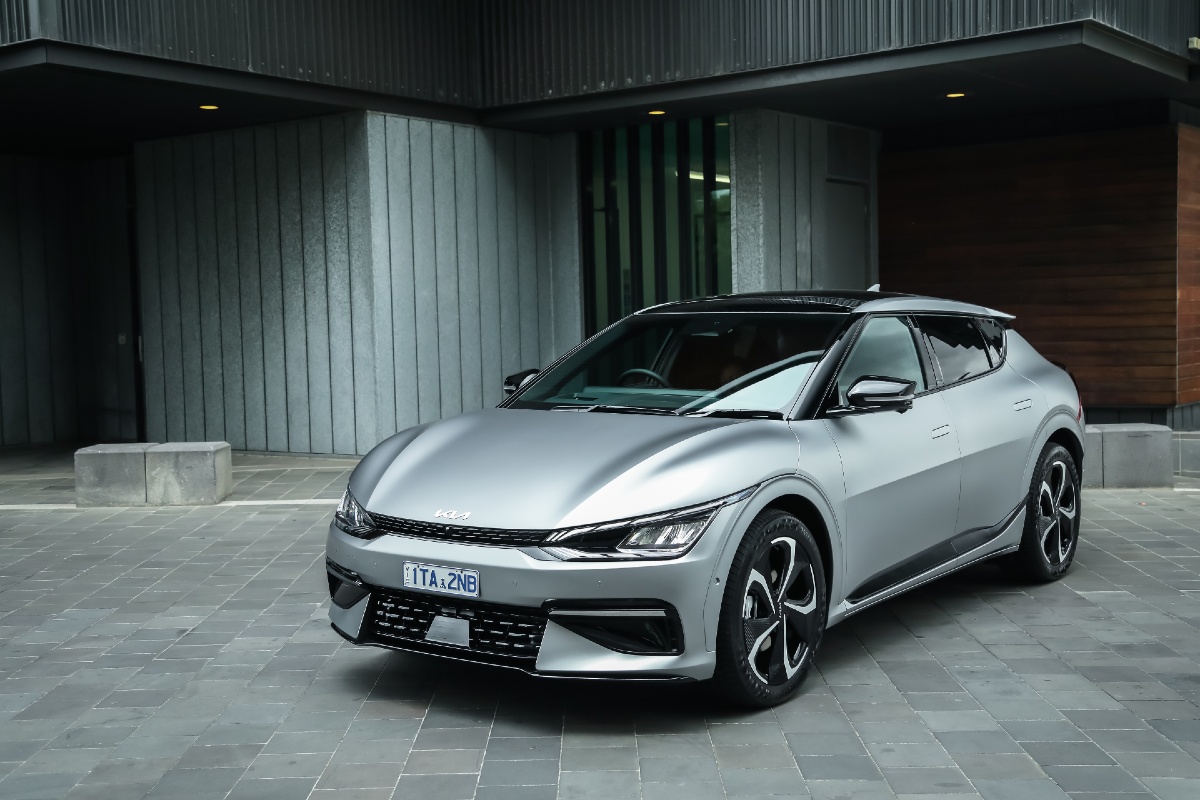
What is it?
A game-changing new model for the aspiring South Korean brand. Where the Stinger failed, the EV6 promises to succeed, ushering a new era for a brand once known for building ‘cheap and cheerful’ cars (aka, cheap and not very impressive).
The Kia of 2022, the one that has introduced the EV6, is a much more capable and ambitious company. It has risen to become one of the top five best-selling brands, competing on equal terms with Toyota, Mazda and Hyundai.
With the automotive world moving into an electric future, Kia needed to make a major statement about its intent with electric cars. The EV6 is that statement.
READ MORE: Kia takes aim at Lamborghini with 430kW SUV
Does it have any racing pedigree?
Kia has never really committed to any major motorsport program, unfortunately. However, it hasn’t seemed to damage the brand’s sales in Australia. It has managed to steadily climb the sales charts with its combination of good value passenger cars and SUVs.
ROAD TEST: 2021 Kia Stinger V6 review
Perhaps if it wants to take the next step and close the sizeable gap to Toyota it will need to inject more passion and emotion into the brand, which is something motorsport does very well. Toyota doesn’t really need to run the 86 Series to make it the best-selling brand, but it helps to build excitement around the company. Something for the Kia management to think about…
What’s under the bonnet?
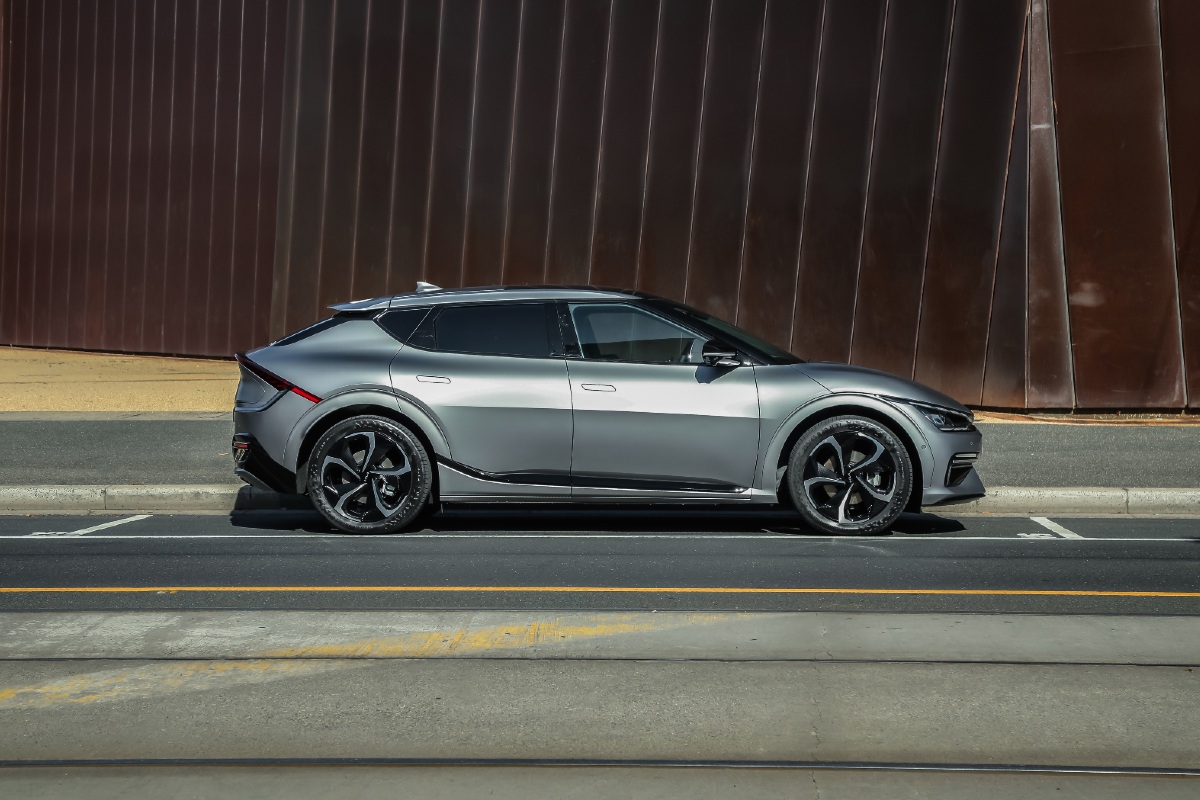
The EV6 is built on an all-new electric vehicle architecture designed by Hyundai-Kia Group, known as the ‘e-GMP’ platform. This is the same underpinnings as the Hyundai Ioniq 5 and the Genesis GV60, which are available with either a single-motor/rear-wheel drive or dual-motor/all-wheel drive.
ROAD TEST: 2021 Hyundai Ioniq 5 review
We’re testing the current range-topping model, the EV6 GT-Line, which gets the dual-motor, all-wheel drive set-up. The two motors offer up 239kW of power and 605Nm of torque, which makes it the most potent model Kia has ever offered in Australia. By comparison, the 3.3-litre twin-turbo V6 petrol engine in the Stinger had more power, 274kW, but significantly less torque, just 510Nm.
But perhaps more than the fact it has more pulling power, what makes the EV6 so impressive is how easy it unleashes that performance. Like all electric cars, the motors in the EV6 offer almost instantaneous torque, so as soon as you put your foot down the car launches forward with purpose.
It also does it in near silence, which makes the whole experience feel effortless, creating a premium experience.
The official 0-100km/h time is just 5.2 seconds, which isn’t as quick as some EV rivals but is still suitably rapid. If acceleration times are your priority with an electric car then the EV6 isn’t for you, but on the whole it’s a very quick and capable machine.
In terms of range, Kia claims the dual-motor EV6 can run up to 484km before it needs to re-charge. Based on our experience with the car over the course of a week that number seems achievable, especially if you leave it in the i-Pedal setting to really maximize the regenerative braking (more on that in a moment).
How does it handle?
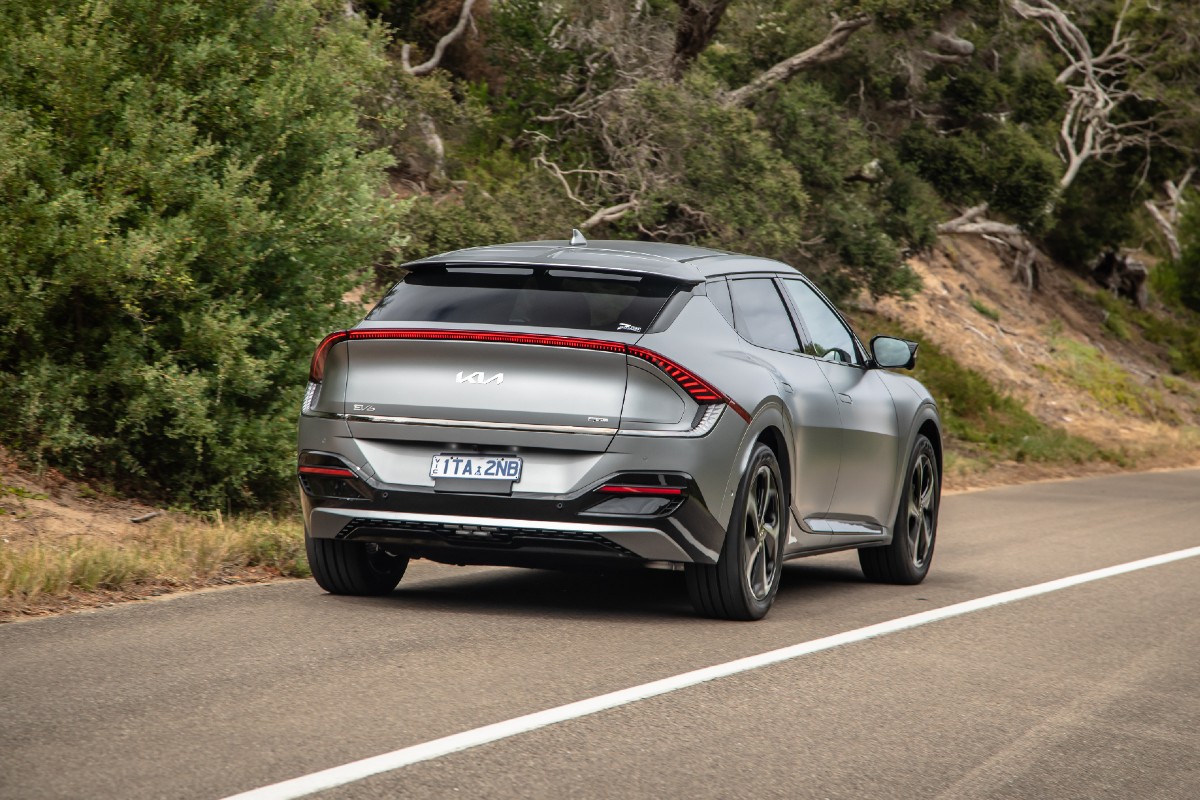
The EV6 GT-Line isn’t trying to be a performance car, instead it manages to combine SUV space and practicality with a very potent powertrain. Kia actually has a more overtly sporty model coming later in 2022 or early next year, the EV6 eGT – which will pack a 430kW/700Nm punch.
So in that context the EV6 GT-Line impresses with the way it drives. Like all EVs it feels heavy, thanks to the batteries, but the suspension manages to control that weight well enough. Combined with direct steering, the EV6 feels capable and sure-footed which makes it nice to drive.
One interesting element of the EV6 and the way it drives is the regenerative braking set-up. Kia (and sister-brand Hyundai) had opted to add paddles to the back of the steering wheel to allow you to adjust the level of regenerative braking while you’re on the move.
There are five levels – no regen, Level 1, Level 2, Level 3 and i-Pedal. The latter effectively means you can drive the EV6 using only the accelerator because the regen is so strong it can bring the car to a complete stop. It requires some adjustment to get used to, but when you do you’ll be able to maximise the battery range.
It may sound like a gimmick, but it’s actually a clever feature that allows you to use the regen when approaching corners like you would engine braking in an internal combustion car. Or you can simply adjust the amount in any given circumstances. For example, on a freeway you can knock it into Level 0 and let it roll along without any resistance, but if you’re in stop-start traffic you may want Level 3 regen or even the i-Pedal.
Where would you most like to drive it?
It would be interesting to see the EV6 handles itself on a track, but perhaps it’s at its best on a winding country road with regular tight corners so you can enjoy the performance from the motors but still recover energy under braking.
What’s the interior like?
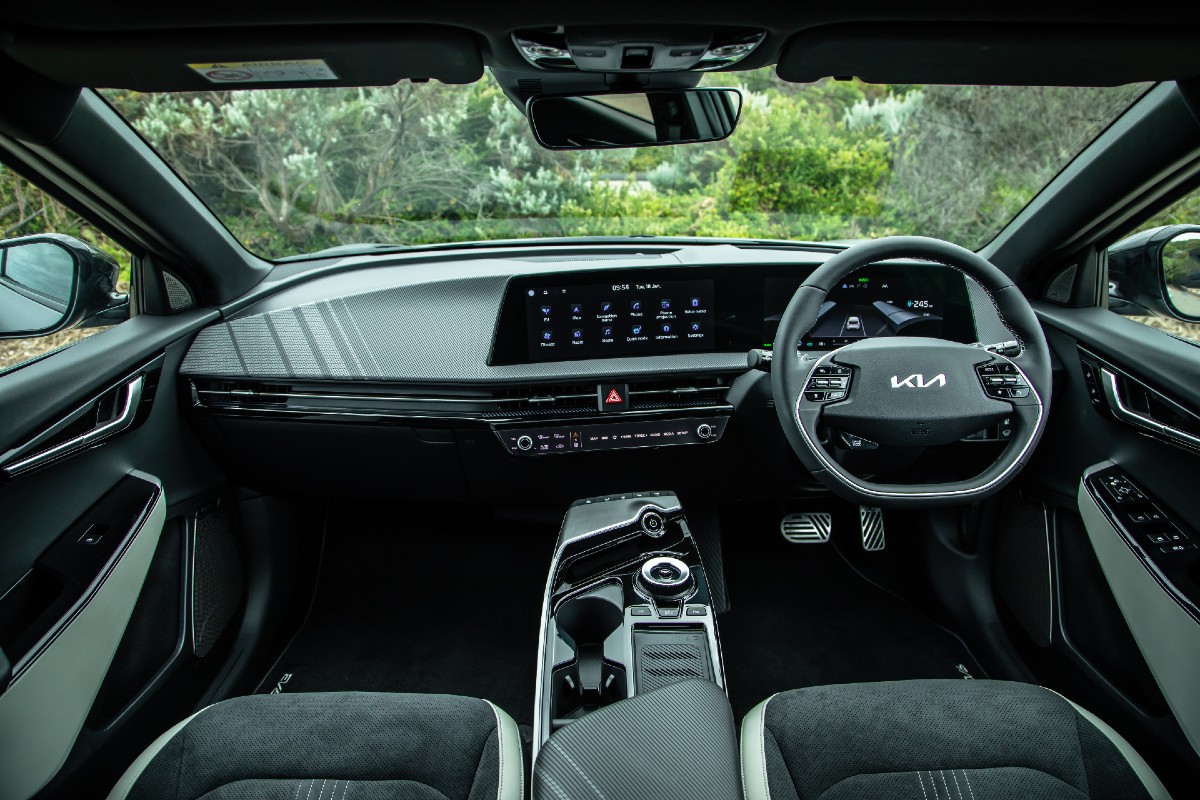
Kia has long been a leader in interior design, with a focus on maximising space and thoughtful design elements. The EV6 takes that to the next level, with the company taking advantage of the e-GMP platform – which has the batteries laid flat on the floor – to create a very spacious layout.
It’s very TARDIS-like, with the space of a large SUV even if the exterior is closer to a mid-size model. The room in the rear seats is nothing short of exceptional, able to take four adults in comfort bordering on luxurious.
The design is highly-commendable too, with plenty of technology to ensure the EV6 looks suitably hi-tech and modern. The most obvious element are the twin screens for the driver information and entertainment systems that are combined into what looks like one large panel – very similar to a Mercedes-Benz.
How much does the Kia EV6 cost?
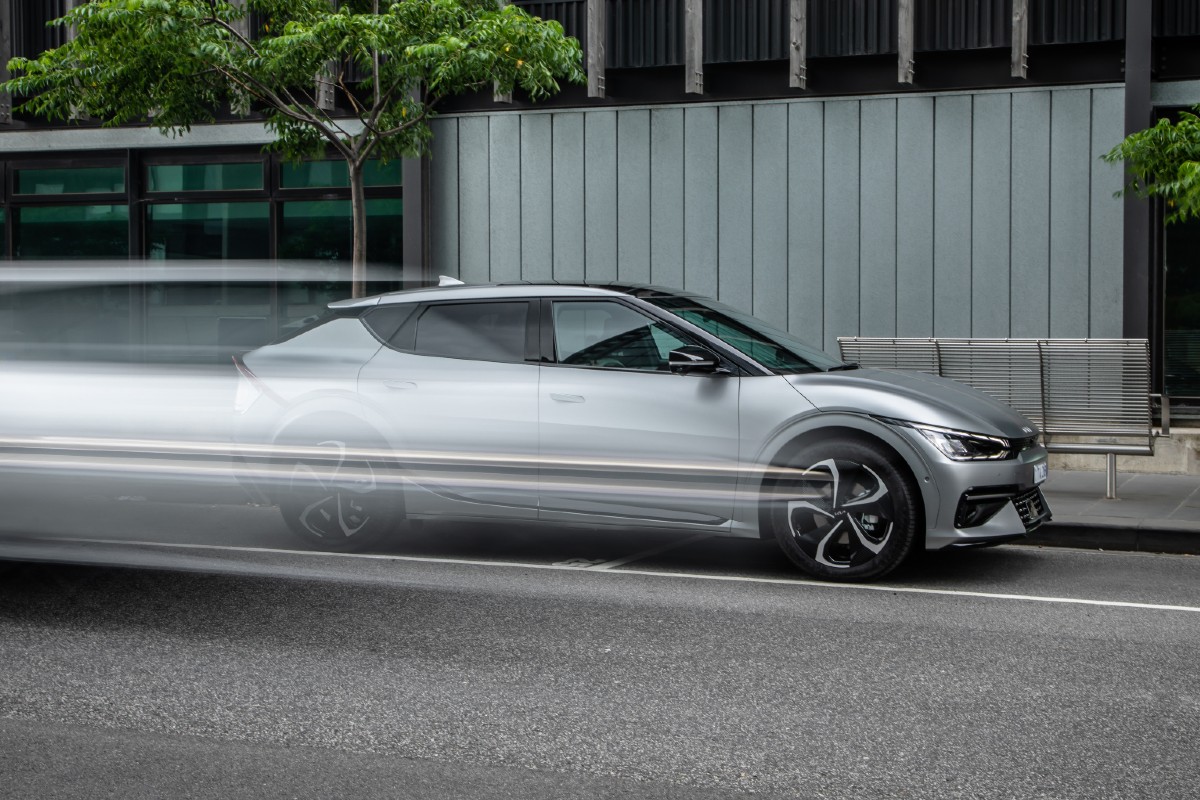
All this ground-breaking technology and design doesn’t come cheap, with the EV6 GT-Line AWD costing $82,990 (plus on-road costs). The rear-wheel drive GT-Line is priced from $74,990, while there’s a low-specification EV6 Air RWD that starts at $67,990.
Obviously that’s expensive for what appears – on the outside – to be a mid-size SUV. But as we explained earlier, the EV6 may be a mid-sizer on the outside but it’s got the space of a large SUV inside. While it may not have seven seats, but if you only need five and you compare the EV6 to a Sorento GT-Line PHEV, which is priced from $80,330 and even the Sorento GT-Line diesel starts at $65,070.
The EV6 also looks good value when you compare it to its electric competition. The equivalent Hyundai Ioniq 5 starts at $75,900, the Audi e-tron is priced from $139,900, the Jaguar I-Pace starts at $142,580 and the BMW iX3 costs $114,900.
And yes, I know I’m comparing a Kia to an Audi, Jaguar and BMW but the EV6 is really that good. The performance of this new-generation electric powertrain is a step above anything the South Korean brand has offered in the past, allowing the brand to have similar performance to its European rivals.
Would I buy one?
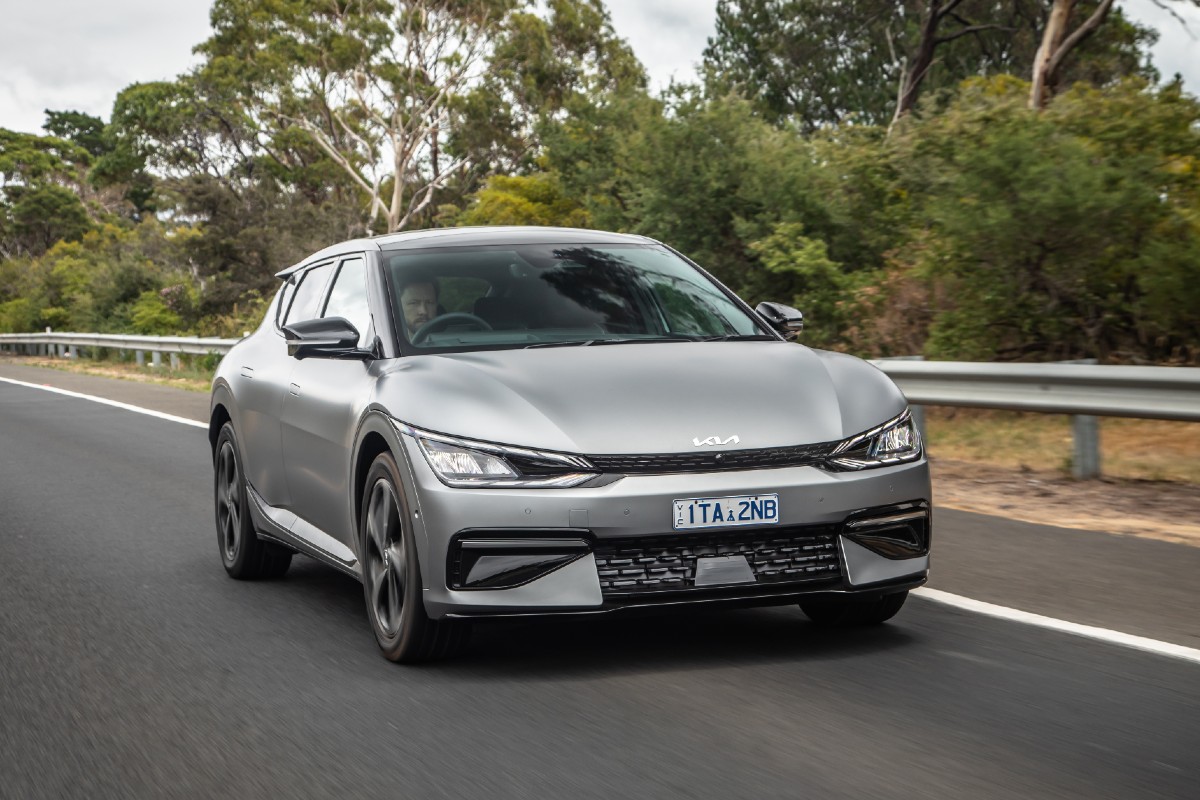
Most definitely. Not only is it a game-changing model for Kia, it might be the best car it has ever made. The EV6 GT-Line is a stand-out in terms of both its performance and design, which as I said, pushes the brand so far away from Kia’s ‘cheap and cheerful’ past it’s a genuine alternative to European options.
The only thing that would stop me from wanting to buy the EV6 GT-Line is the impending arrival of the even more powerful eGT model.
The future for Kia looks very bright.
2022 Kia EV6 GT-Line AWD price and specifications
| Price: | From $82,990 plus on-road costs |
| Powertrain: | Dual electric motors |
| Power: | 239kW |
| Torque: | 605Nm |
| Transmission: | Single-speed automatic, all-wheel drive |
| Range: | 484km |
| Wheels: | 20-inch alloys |
| Tyres: | 255/45 R20 |
| Length: | 4695mm |
| Width: | 1890mm |
| Height: | 1550mm |
| Weight: | 2105kg |
| 0-100km/h: | 5.2 seconds (claimed) |













Discussion about this post